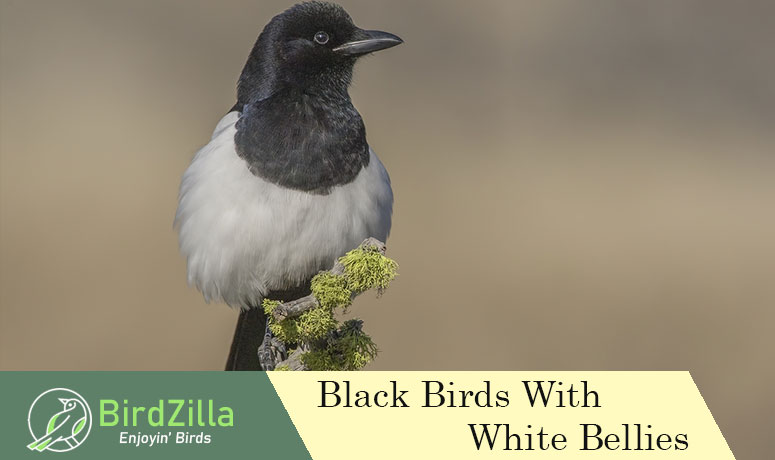
Birds don’t need bright colors to be beautiful. In fact, some of the most striking birds are species with just two colors; black and white.
Black birds with white bellies are just the perfect example of this. Although this plumage pattern isn’t abundant, quite a few common species do show this striking plumage pattern.
Whether for camouflage or for social functions, we bet you’ve seen some black birds with white bellies!
See this article to learn about ten of the most common of these special birds!
On this page
#10 Blackpoll Warbler
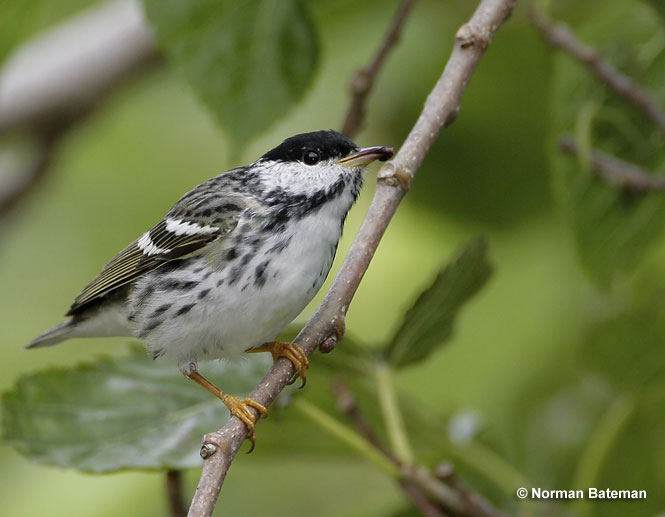
Blackpoll Warblers are small gray warblers with black caps and pale cheeks. Males also have white underparts with a black mustache mark and black streaks on their sides. They have black streaking above and two pale wing bars on long, dark wings.
This species also has a pointed gray and yellowish bill and orange or pale yellow-brown legs.
Females and non-breeding male Blackpoll Warblers have some streaks on olive-gray upperparts, a dark line through each eye, fine streaking on pale underparts, and two pale wing bars.
This common species breeds in boreal forests in Alaska and Canada, and migrates to South America for the winter.
#9 Carolina Chickadee
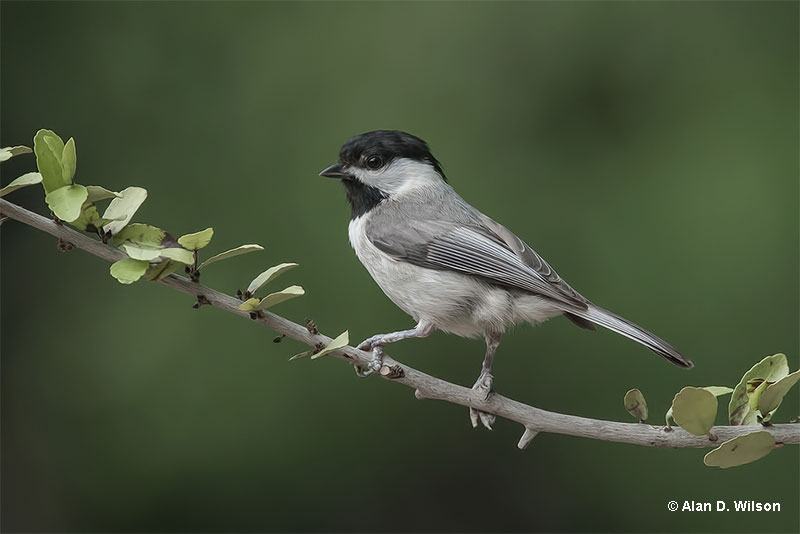
© Alan D. Wilson
Carolina Chickadees are small birds with stubby little bills, a black cap, and a black throat. They have pale gray upperparts, snow-white cheeks, and pale tan underparts.
This species shows some white edging on the feathers of its wings but not as much as the Black-capped Chickadee.
Both sexes look alike and form small flocks that move with each other and other small bird species. This species is also one of the more regular visitors to bird feeders.
We see Carolina Chickadees in parks, woodlands, and gardens in much of the southeastern USA. They occur west to Texas and Oklahoma, and north to New Jersey.
#8 Black Phoebe
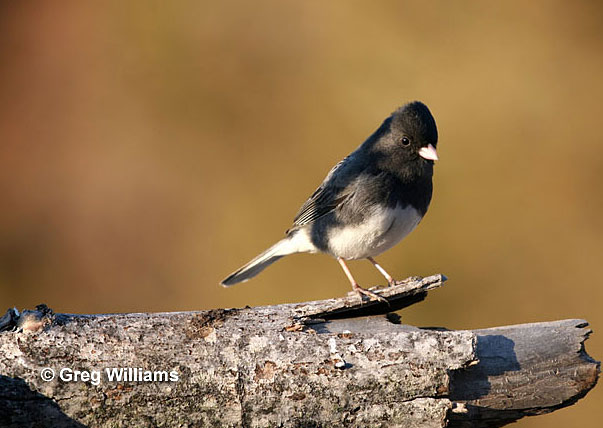
Black Phoebes are small to medium-sized, slender, sooty black flycatchers with a bright white belly. They also have a bit of white edging on their wings and tail, a short crest, and a slender black beak.
Both sexes of the Black Phoebe look the same. They usually occur in pairs that perch low on bridges and vegetation near streams, rivers, and other wetlands in open arid habitats.
We see this common bird in California and various parts of the American Southwest, often in canyons. They also occur from Mexico to Central America, and in the Andes of South America.
#7 Eastern Kingbird
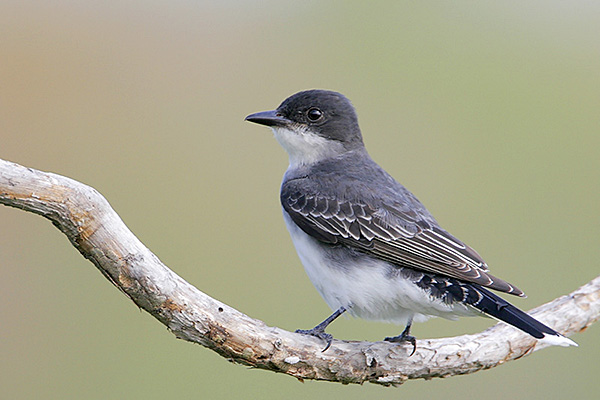
Eastern Kingbirds are small to medium-sized flycatchers with blackish upperparts and contrasting white underparts. With a close look, we can also see a gray wash on their chest, pale edging on the feathers in their wings, and a bold white tip on their tail.
Both sexes of the Eastern Kingbird look alike all year long. In summer, pairs sit on prominent perches in fields and other open habitats. In fall, Eastern Kingbirds form flocks that feed on berries and migrate all the way to South America.
This species is common in large parts of Canada, the eastern USA, and in much of the northern part of the country.
#6 Barn Swallow
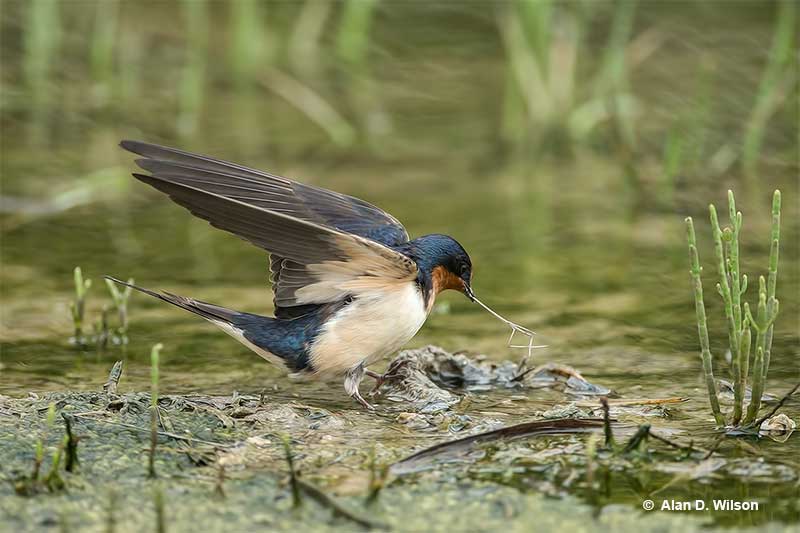
Barn Swallows are small, elegant birds that spend most of their time on the wing. They are dark steely blue, almost black above, have rich chestnut on their front and throat, and peach underparts.
They also have white spots on their long, forked tail. Both sexes of the Barn Swallow look alike, although males have longer tails and tend to have brighter colors.
Barn Swallows usually occur in flocks that forage for bugs while zipping back and forth over farm fields and other open habitats. This species is common in southern Alaska, a large part of Alaska, most of the USA, and Eurasia. They winter in tropical areas in many parts of the world.
#5 White-breasted Nuthatch
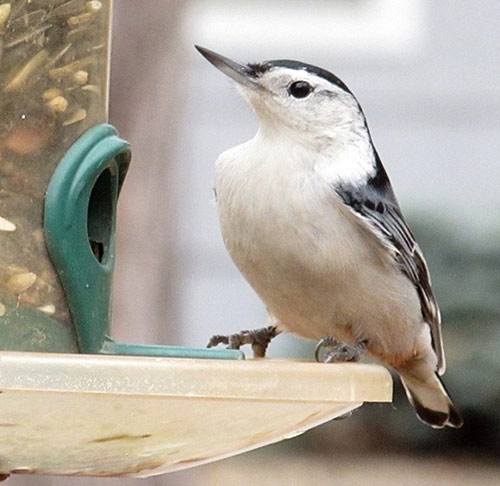
White-breasted Nuthatches are small, animated birds with a longish, sharp beak that looks slightly upturned. They have blue-gray upperparts, black edging on their long wings, and black and white on a rather short, blue-gray tail.
This species also has a bright white face and breast, gray sides, and some rusty markings on its belly and undertail. Male White-breasted Nuthatches have a narrow black cap, while females have a gray cap.
This species is common in parks, gardens, and woodlands in many parts of southern Canada, most of the USA, and many montane areas in Mexico. Pairs visit feeders and forage with other small birds.
#4 Black-capped Chickadee
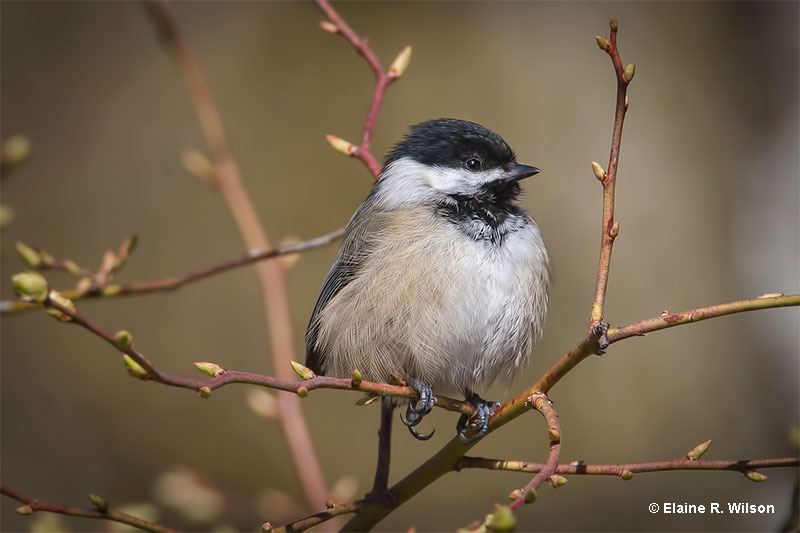
Black-capped Chickadees are small, cute birds with stubby beaks, a smart black cap, and a black throat. They have gray upperparts, bright white cheeks, and pale buff underparts.
This species also shows some white edging on the feathers of its wings, especially on the upper part of the wing.
Both sexes of the Black-capped Chickadee look the same. They form small flocks that forage with each other and other small birds. This common and appealing species is also a regular visitor to bird feeders.
We see Black-capped Chickadees in gardens, parks, and woods in Alaska, Canada, and most of the northern USA.
#3 Downy Woodpecker
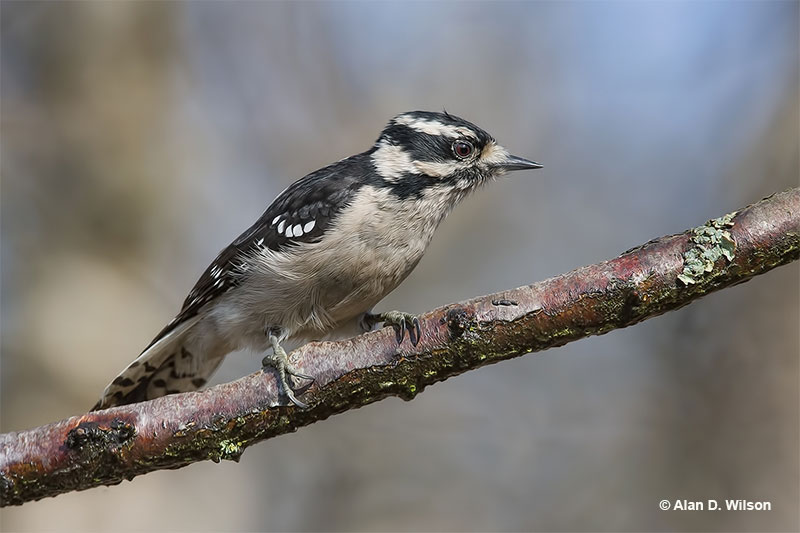
Downy Woodpeckers are small, boldly patterned woodpeckers with a short beak. They have a striking black and white head and black upperparts with a big white patch on their back. They also have white spots on their black wings, and white at the edges of their black, pointed tail.
Both sexes look the same, except that male Downy Woodpeckers have a small red spot on their head.
Related: What does finding a white feather mean?
Downy Woodpeckers usually occur in pairs and are common backyard visitors. They also live in parks and woodlands in Alaska, Canada, and most of the USA. They are absent from most of Texas and southwestern states.
#2 Dark-eyed Junco
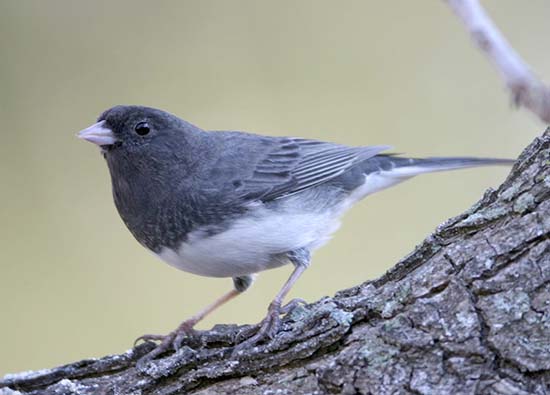
Dark-eyed Juncos are small, handsome, sparrow-like birds with a lot of white in their tail and pale pinkish, conical beaks. They can be slate-gray with a white belly and undertail, or have a dark hood and brown colors on their back and sides.
Some subspecies are also mostly pale gray with a red-brown patch on their back. Both sexes look similar, except that females have duller, browner, less contrasting plumage.
Dark-eyed Juncos sing from trees but are usually seen foraging at feeders or on the ground. Flocks of this common species live in woods and park-like habitats in Alaska, Canada, and in much of the USA.
#1 Black-billed Magpie
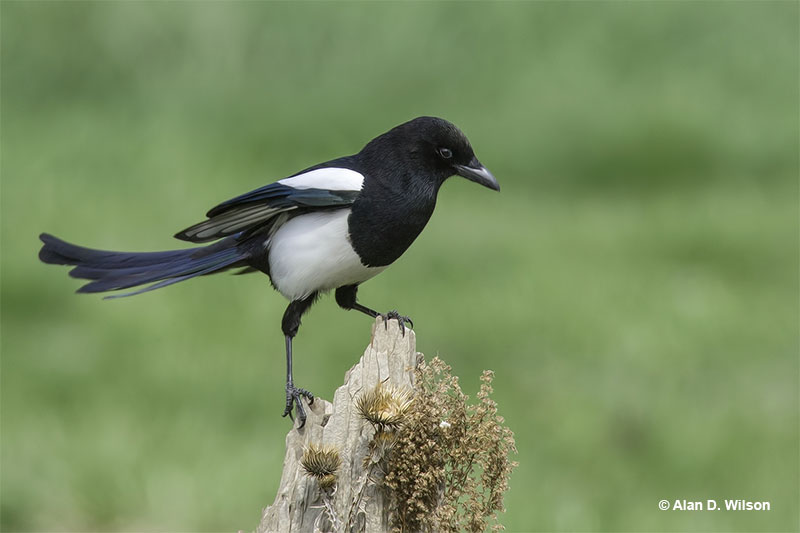
Black-billed Magpies are big, long-tailed, black birds with white bellies. Both sexes look alike and occur as pairs as well as in small flocks.
We see this species on the ground and in vegetation in open and semi-open habitats. They are common in Alaska, western and central Canada, and in the western USA south to New Mexico and east to Minnesota.
Frequently Asked Questions
What bird has a white belly and black face?
A bird with a white belly and a black face could be a Downy Woodpecker, Loggerhead Shrike, or Eastern Kingbird.
What bird is black with a white head?
A bird that is black with a white head could be an adult Bald Eagle, Crested Caracara, or a White-headed Woodpecker.
What is a black bird with a white chest and belly?
A black bird with a white chest and belly is probably a Black-billed Magpie.
What kind of bird has a black and white striped chest?
A bird with a black and white striped chest could be a European Starling in winter plumage, a Black-and-white Warbler, Blackpoll Warbler, or even an Acorn Woodpecker.
What is a crow like bird with a white chest?
A crow like bird with a white chest is probably a Black-billed Magpie.
What is a large black and white bird?
A large black and white bird could be a Black-billed Magpie, Pileated Woodpecker, Common Loon, different duck species, Western Grebe, or Clark’s Grebe.
Have you seen any of these birds? Let us know in the comments!

